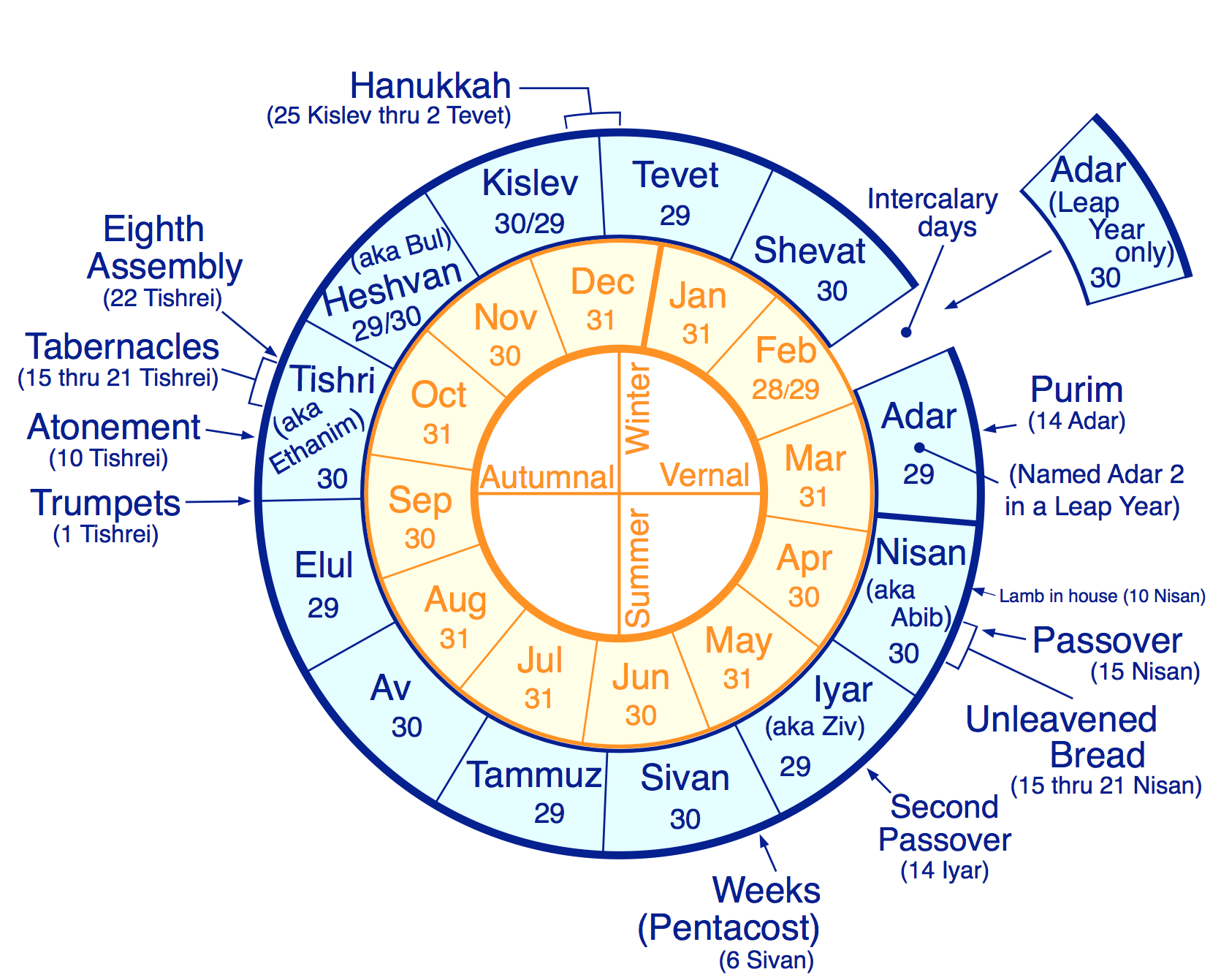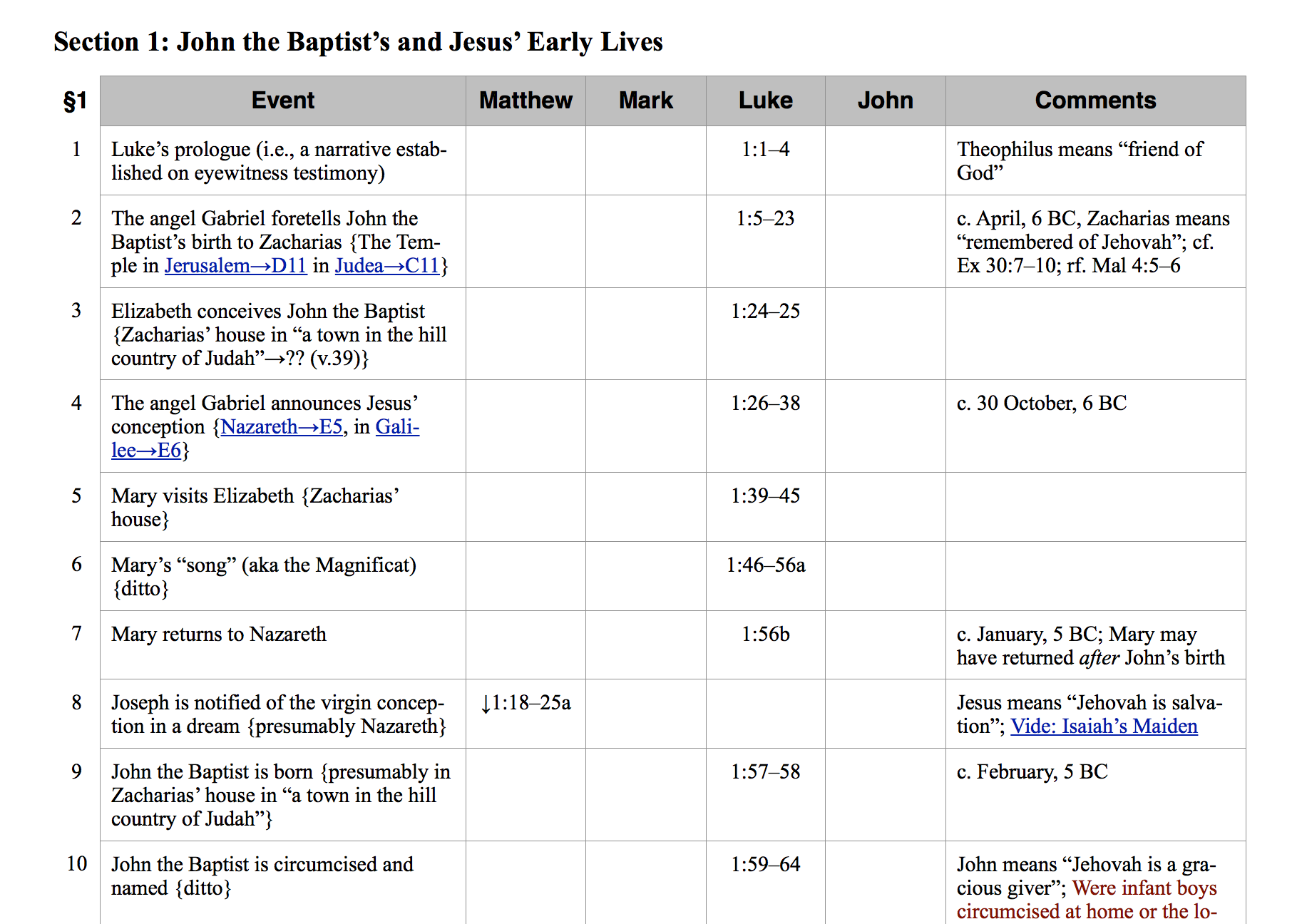 |
 |
|
| A CHRONOLOGY | ||
| OF THE | ||
| FOUR GOSPELS | ||
Most people are aware that, many years ago, there lived a wise and virtuous man named Jesus of Nazareth. This Jesus travelled around teaching and preaching. At the very least, he is thought of as having started what ultimately became the global religious movement known as Christianity. But what is it about this man and his deeds that appeals so much to those who embrace Christianity? To answer that question, we would have to read about Jesus and learn more about him.
Much of what we know about Jesus—but not all—comes from a set of ancient manuscripts known as the four gospels. (The term ‘gospel’ comes indirectly from a Greek word that means “good news,” yet it has come to also mean something that teaches about Jesus.) A relatively short time after Jesus lived—20 to 60 years—, the four gospels were written by some of the followers of Jesus, namely four guys named Matthew, Mark, Luke and John. Their names provide the titles to these bits of “good news,” and they provide essentially eyewitness accounts concerning the things Jesus said and did. (There are other documents called “gospels,” but they are generally not part of those documents Christians consider as authoritative, mostly because they were either authored too late to be considered reliable, or because they contain ideas or concepts directly contradictory to the earlier, more reliable gospels and some letters written by other early followers of Jesus.)
Virtually all modern scholars of antiquity agree that Jesus existed historically. He was a Jew who lived in Galilee, a region of Israel. At the beginning of what is considered “his ministry,” he was baptized by a fellow Jew, John the Baptist, and subsequently began a period of teaching, healing the sick, and performing various other miracles. These actions caused others to gather around and follow him. Ultimately though, he was arrested and tried by the Jewish authorities for blasphemy. He was then turned over to the Roman government for execution, by whom he was subsequently crucified on the order of Pontius Pilate, the Roman prefect at the time. After his death, his followers believed he rose from the dead, which they considered, along with the things Jesus said and did while alive, as evidence he was their hoped for Messiah. The community they formed became the early Christian Church.
If we want to know about Jesus, then we need to read the eyewitness testimony that speaks about him. Having four separate gospels gives us more information about Jesus, but it can be difficult to read them along side each other and know which parts of each testimony of the various events in Jesus’ life coincide with each other—i.e., which are parallel passages. This page is an introduction to a printer-friendly Chronology of the Four Gospels (current revision dated 2023-Nov-01)—now including an Alternative Timelines diagram—that greatly simplifies such a task. This page serves as an introduction and place to list currently known errors or omissions, and a version history. Click or tap on the above link(s) to view, download or print the current Chronology and/or Alternative Timelines.
If you locate any typo(s) or other error(s) within the above linked documents, feel free to email the details to editor@gospelchronology.org. Please include the version date of the copy in which you found the error(s).
Because, at least in theory, errors can be discovered and reported, this Chronology could be considered a work in progress. If you are interested in being notified when updated versions are pushed to the website, send an email to editor@gospelchronology.org with “Keep Me Updated” as the Subject. Each time the Chronology is updated an email will be sent out to everyone who has requested being kept up to date (but if the message comes back as undeliverable, your address will be purged and no further attempts will be made). If your website links to this page or the actual PDF—thank you!!—, please send an email to the above address so I can notify you when layout or domain name changes occur. We will never willingly give your email address to others.
2023-Nov-01 (44 pages): A revision that includes changing our hosting domain name, as well as finally having implied permisson from the map maker to include their map.
2023-Oct-12 (44 pages): A significant revision that added the Alternative Timelines appendix, as well as revising the postulated Dating of the Birth of Jesus. Significantly expanded the Extra-Biblical Confirmation comments; and added remarks asking Was Jesus a Carpenter. Updated grammar and wording throughout.
2018-Dec-22 (42 pages): A minor revision that relocates Mary’s return from Elizabeth’s to after the birth of John the Baptist, adds new extended comments dealing with Conflated Attestation and the Pericope Adulterae, as well as clarifying the Jesus Working by Beelzebub note, adding a referral to Dan Wallace’s article addressing the Mark 2:26 Abiathar question, and adding some additional scripture references throughout.
2018-May-18 (40 pages): A major revision that refined the chronological tables of passages, and added new extended comments dealing with Isaiah’s Maiden; Divergent Genealogies; The Hebrew Calendar; The Jewish Festivals; Dating Major Events in Jesus’ Life; Herod’s Death; Jesus “About 30”; Second First (Sabbath); The Twelve; Jesus Working by Beelzebub; (The Sermon on the) Mount or Plain; Jesus Avoids Publicity; The Passover Seder; Extra-Biblical Confirmation (of the crucifixion); and Dating the Crucifixion. Also, completely reworked the extended comments for Dating the Birth of Jesus, and expanded those for The Herods & Quirinius; Tiberius, Pilate & Lysanius; (The timing of) Building the Temple; Herod’s Execution of John the Baptist; The Written Charge; (The darkness) Over the Whole Land; Josephus’ Testimonium; and The Eleven. Added an appendix that shows Various Dates Around the Turn of the Era (from BC to AD). Added a title page, a copyright page, and hyperlinks.
2017-Dec-31 (26 pages): Minor additions and polishing.
2017-Aug-17 (26 pages): Initial release, including extended comments dealing with Dating the Events Surrounding the Birth of Jesus; The Herods & Quirinius; Tiberius & Pilate; Lysanius; The (timing of) Building of the Temple; (The) Swine Run; Matthews Commissioning of the Twelve; Herod’s Execution of John; Herodias’ Divorce; A Denarius; Annas & Caiaphas; The Chagiga; Tacitus’ Confirmation (of the crucifixion); The Written Charge; (The darkness) Over the Whole Land; Telling No One; Josephus Testimonium; and The Eleven.